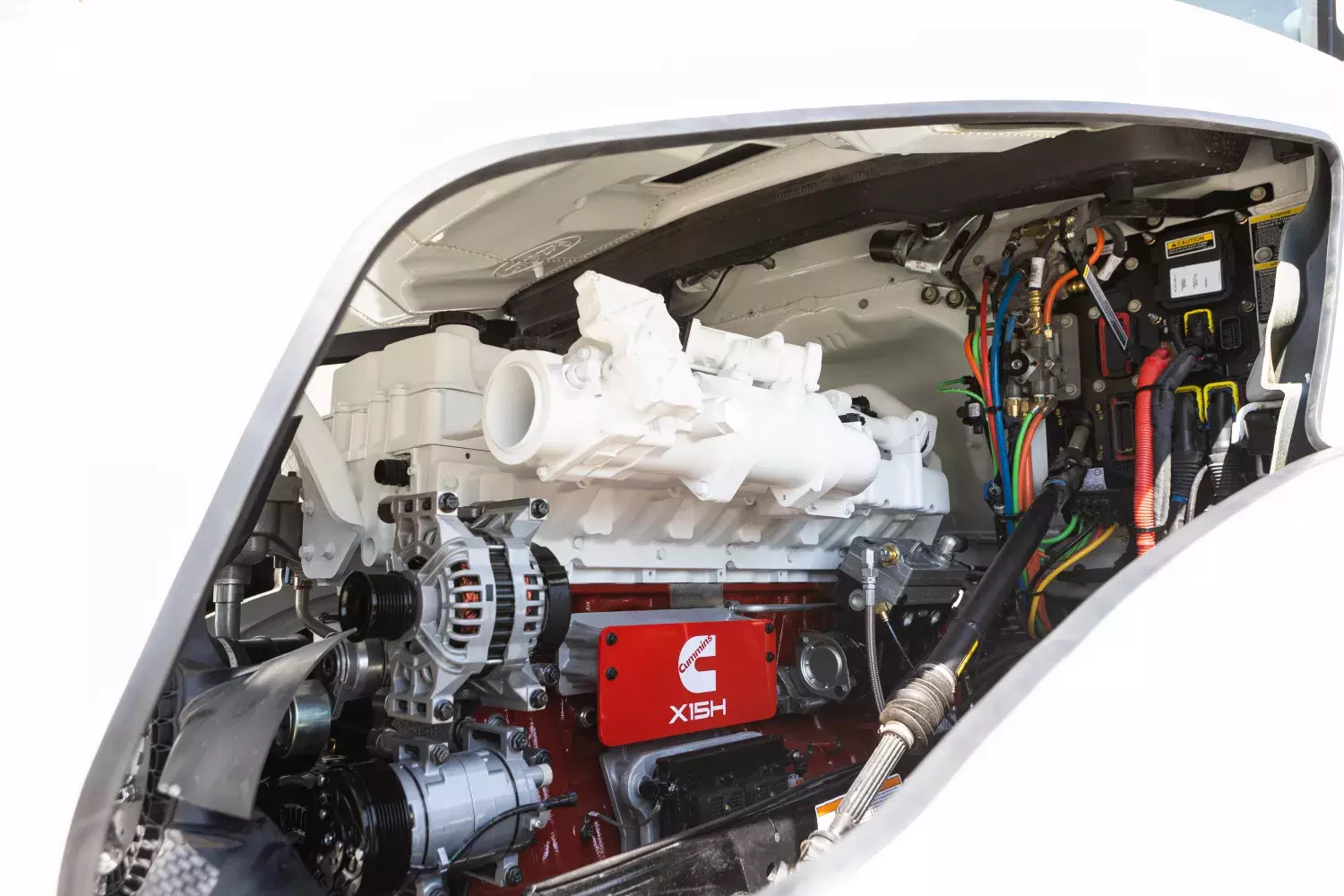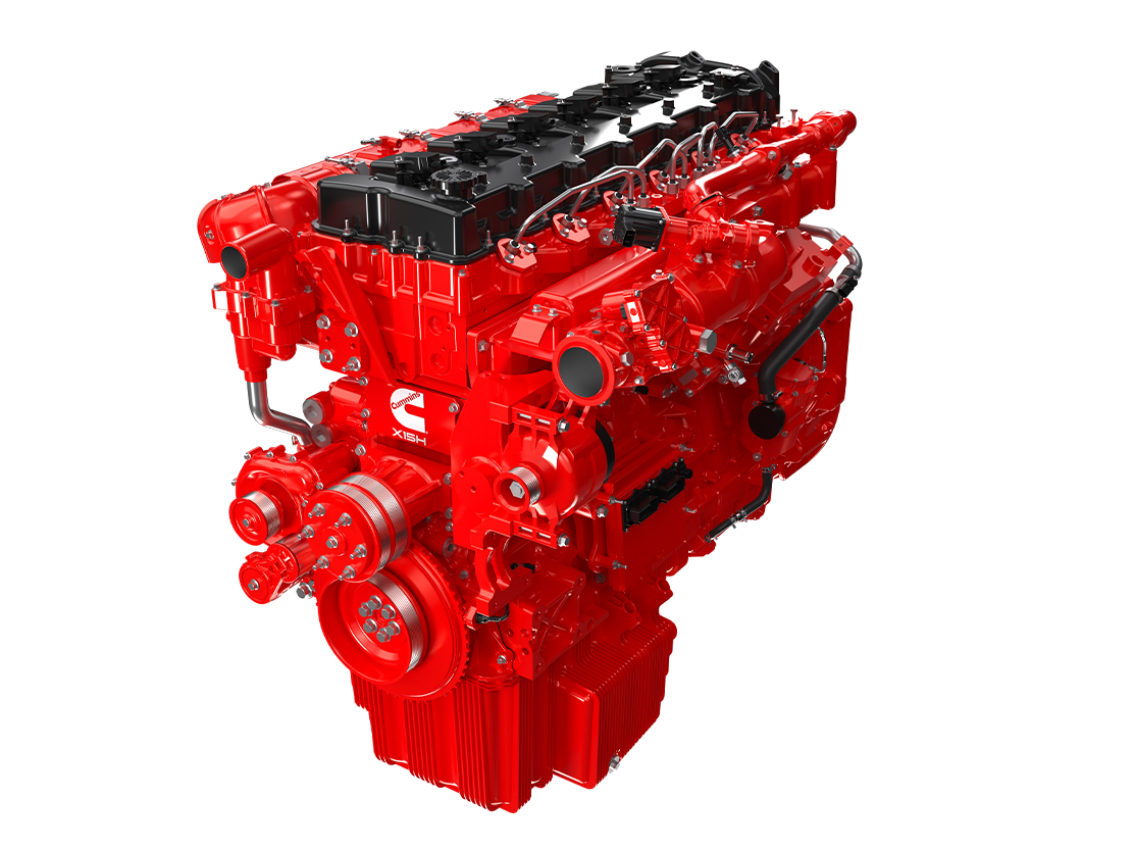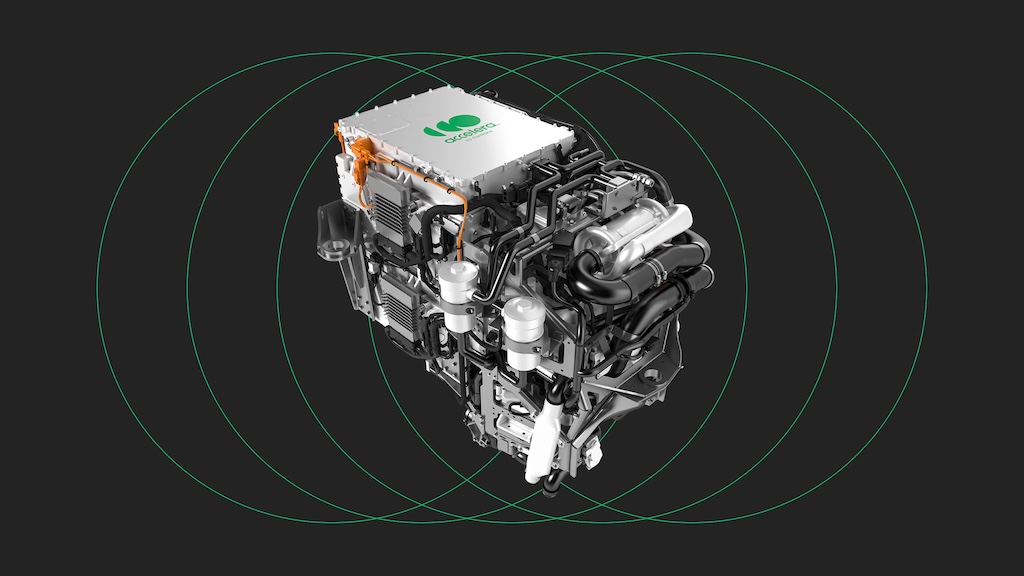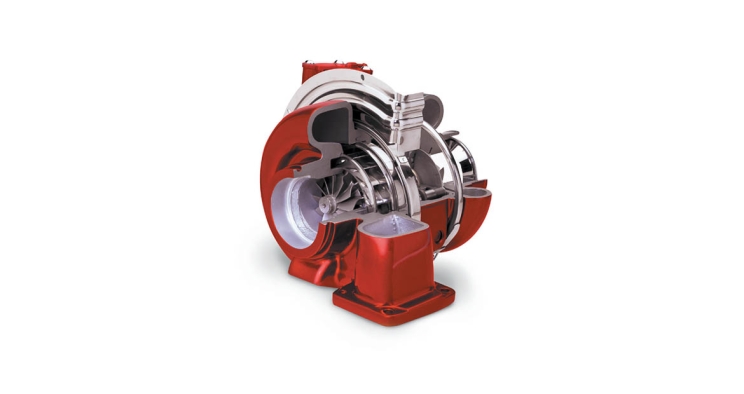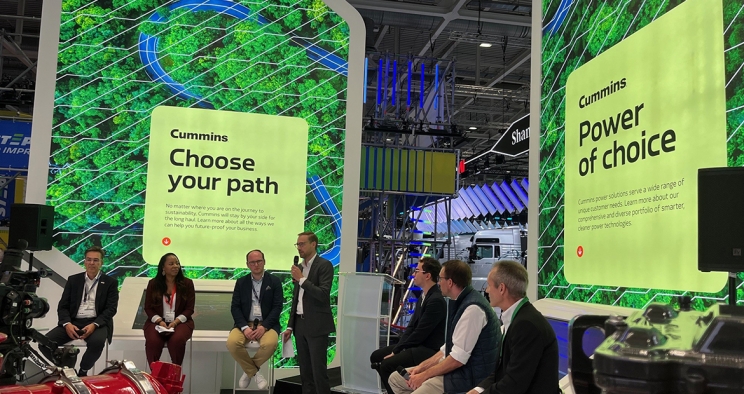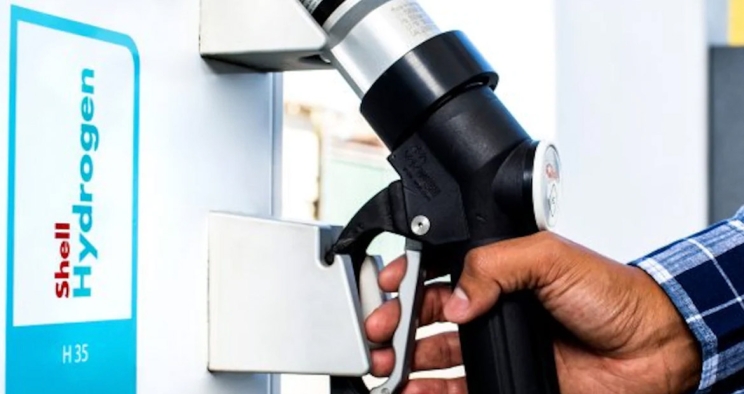Hydrogen engines can help you reduce emissions
At Cummins, we understand the energy transition poses new challenges for all of us around the globe. That's why we're actively working to simplify the process.
Meet industry demands
Hydrogen engines are similar to the combustion engine technology that people today know, use, and trust. Because hydrogen engines are reliable, they can help make the energy transition a viable and sustainable solution.
Adhere to government regulations
As companies look to reduce there environmental impact, a renewable source like hydrogen is one of the most exciting sources for powering vehicles with zero emissions.
Make a gradual transition
For companies not yet ready to transition to hydrogen engines, our broad portfolio of trusted Cummins products offers solutions for any stage of your journey to a better tomorrow.
Future-proof your business
For buses, long-haul trucks, and even ships, hydrogen energy is the future of fuel. Because hydrogen engines have similar operational and maintenance costs to combustible engines, they're a strategic and sustainable investment.
How does a hydrogen engine work?
Hydrogen engines share many similar components to diesel engines, making them an efficient, familiar, and scalable alternative to traditional engines.
Zero emissions
Hydrogen engines release nearly zero trace amounts of carbon dioxide, and fuel cell electric vehicles (FECVs) produce no emissions other than water vapor.
Fast refueling time
Unlike electric vehicles, which take vehicles off the road for extended times to charge, hydrogen engines offer quick refueling times and diesel-like performance, durability, and reliability.
Reduced carbon footprint
Hydrogen engine technology can help you reduce greenhouse gas emissions, meet government regulations, and embrace the energy transition as you drive toward destination zero.
Similar engine hardware
At Cummins, we're leveraging our existing platforms and engine expertise to create scalable hydrogen engine solutions that reduce cost.
Featured Engine
We teamed up with Werner Enterprises to integrate Cummins' new 15L natural gas and 15L hydrogen internal combustion engines. The 15L Hydrogen ICE Engine will offer ratings up to 500 horsepower and 1,850 ft-Ib of torque for a purpose-built and fully integrated natural gas powertrain with zero emissions.
Learn more about hydrogen engine technology
At Cummins, we’re continuously developing new resources and information to keep you updated on hydrogen technology. Explore these resources to discover how hydrogen technology works and why it’s paving the way for destination zero.
Never miss the latest
Hydrogen engine FAQs
Hydrogen engines work in one of two ways. In the first way, a device known as a fuel cell converts hydrogen into electricity. Then, that electricity is used to power the vehicle’s electric motor. In the second way, an internal combustion engine burns hydrogen and turns it into fuel. Read more here.
While hydrogen internal combustion engines run on hydrogen, they run similarly to natural gas engines and have very similar components to natural and diesel engines. Hydrogen engines work by converting hydrogen into electricity or burning hydrogen as fuel.
Because hydrogen engines can be mass-produced using the same supply chains and factories as combustion engines, they offer a unique scalable advantage that could reduce cost and deliver consistent reliability.
One of the first internal combustion engines ran on a mixture of hydrogen and oxygen, featuring an electric spark ignition mechanism. That said, a diesel engine cannot run on hydrogen alone.
Hydrogen engines look, sound, and work similarly to internal combustion engines. Their reliability and durability are also equivalent, making them an excellent option as we move towards destination zero.

